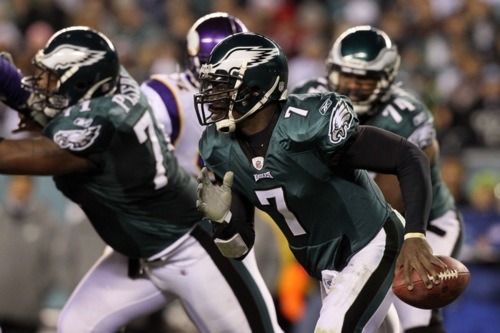
What made Michael Vick so much better in 2010 than he was in 2009? To some extent we already know the narrative. Vick needed a year to mature, to learn the system, to shake off the rust, to get back his trademark speed.
But I wonder now how much was really physical improvement from year one to year two and how much was simply opportunity. Obviously such a question is hard to measure.
One statistic does make that case, though. If we look purely at Vick’s running chances, we see that he didn’t really improve - he just had different (read: better) opportunities.
In 2010, according to Pro Football Focus, Vick was in on 21 planned runs, not including QB sneaks or kneel downs. On those runs, which were mostly wildcat plays, Vick averaged only 3.9 yards per carry and caused only three missed tackles. I wouldn’t necessarily call him ineffective just based on those numbers, but everyone wondered if those snaps were better spent with Donovan McNabb at the helm.
Fast forward a year, and Vick had almost the exact same number of planned runs. In 29 chances, Vick ran for 3.8 yards per carry and four total missed tackles. Those numbers are almost identical to 2009. He didn’t show any increased speed or agility in that category of plays.
Vick’s “newfound” speed in 2010 manifested only in scrambling attempts. In that subset of runs, Vick averaged 9.6 yards per scramble, scored 10 touchdowns and broke 22 tackles in 62 attempts. Since Vick wasn’t on the field to pass in 2009, he never got the opportunity to scramble. Yet that was where he was most effective - and where I’d reckon he has always been most effective.
Vick isn’t a really a “running quarterback.” Like many others before him, Vick is a scrambler. That’s what separates him from the pack, or, more accurately, from the defenders. When he wasn’t utilized that way in the last two years, he was ineffective.
Hopefully, in 2011 the Eagles will leave the planned runs to LeSean McCoy and let Michael Vick do what he does best: improvise.
Photo from Getty.